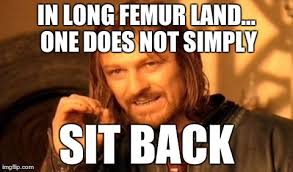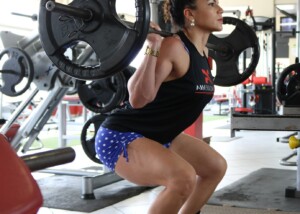
Learn about what increasing low back flexibility can do for your squat if you’re stiffed with the curse of long femurs and a short torso!
If you’ve been working hard on getting your squat to parallel without an excessive forward lean, thanks to “bad levers” (femurs longer than torso), you may have read somewhere that the problem is primarily lack of flexibility in your low back.
I have investigated the issue of bad levers or poor anthropometrics as they apply to the back squat, a favorite exercise among those wanting to build up their legs and glutes.
The more flexible your low back is, the less difficult the squat will be if your femurs are longer than your torso. Your overall body height is not relevant.
However, a super flexible lumbar region doesn’t mean that your entire back will be as upright as someone’s whose femurs are shorter than their torso.
Instead, super flexibility will enable the upper portion of your back to be strikingly upright, even if you have a short torso and long femurs.
How do I know? I recently witnessed this. A man was doing back squats. His movements were very deliberate and careful, and it was obvious he’d been working very hard on perfecting his form.
He had a visibly shorter torso than femurs, one of those “high waisted” men. (The better term is “high waist,” not “short waist”).
His low back was so super flexible that the upper portion of his spinal column was fairly upright as he sunk to a tad past parallel.
It looked really odd. This was his way of overcoming the short torso long femur issue.
But it’s too simplistic, and not fair at all, to state: “Well gee, if your femurs are longer than your torso, just improve your low back flexibility and you’ll be able to do the squat.”
The degree of flexibility in this man’s lower spine was significant, something that most men will never be able to attain.
It’s possible this man used to train in a sport that’s conducive to substantial lumbar “bendability,” such as diving.
He was tall, so I’m doubting he was ever much into gymnastics.
His low back was so ultra-flexible that when he walked around the gym, it was molded in hyperextension: His chest puffed out and his butt stuck out.
To the untrained eye, he walked around with arrogance, but what this really was, was a locked-in position of his vertebral column.
To expect to develop this kind of flexibility, to overcome the difficulties that a short torso and long femurs cause in the back squat, is just unrealistic.
However, if you’re one of the few who can develop this kind of rare bendability in the vertebral column, it will definitely assist you with getting parallel and beyond in your back squat.









































